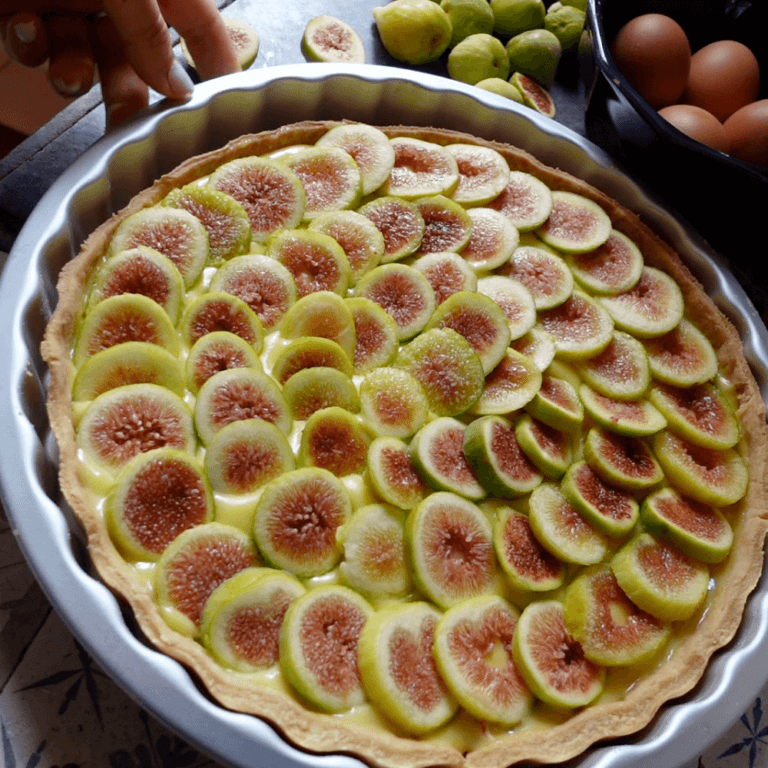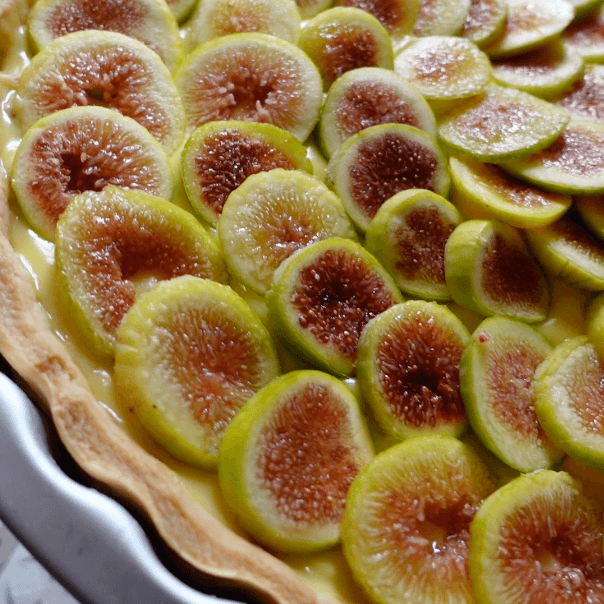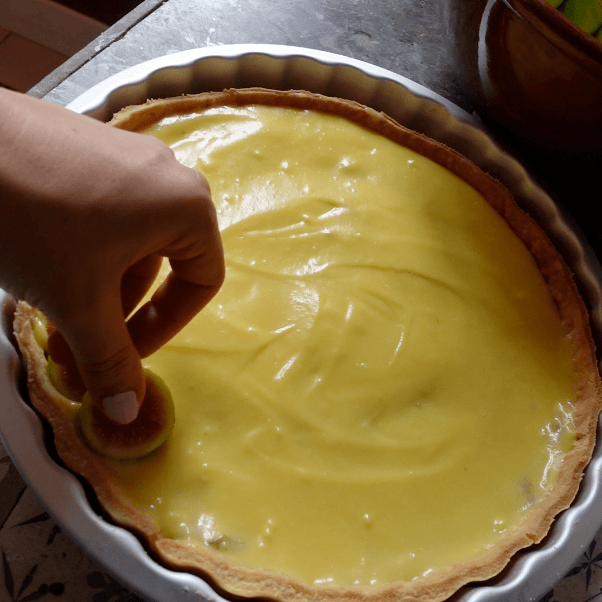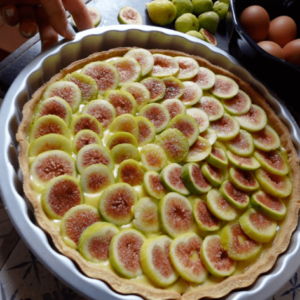
When we were in France we stayed in a little town about an hour from Bordeaux on a property that had a massive fig tree. I made it my mission to use as many figs as possible so this tart was the answer! The custard was a little loose in the video as I didn’t have any measuring equipment, but I have made it again since being back and written the recipe from that one.

Pastry
250g plain flour
130g unsalted butter
70g icing sugar
2-3 tbsp cold milk (or water)
Pastry cream
2 cups (500ml) milk
1 tsp vanilla bean extract
100g caster sugar
40g corn flour/starch
4 egg yolks
30g butter
1/2 tsp vanilla bean paste
Fig jam
500g ripe green or purple figs
250g caster sugar
1/2 cup water
Topping
15 fresh figs, thinly sliced


For the Pastry
For the Fig Jam
For the Pastry Cream
Assembly


Mon Mack Food is my little space to share my passion for food. It is also a place to document the recipes I’ve created while cooking for friends and family! While it is now just a hobby, my absolute dream is to build this project into something I can one day call my job 🙂